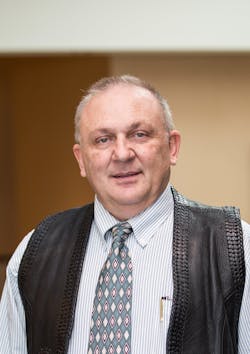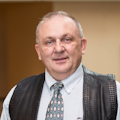
The Laser Institute of America's ICALEO conference in San Diego last week drew over 400 people from about 30 countries with record attendance. As usual, attendees were heavily skewed toward non-US citizens, with Germany, Japan, and China in particular being strongly represented (be sure to see Dave Belforte's blog on this event).
The one thing that potentially has the most impact on the future of the LIA is the announced retirement of long-time executive director Peter Baker. Peter's tenure will end April 1, 2017—and in the meantime, a search committee headed by incoming president Paul Denny from Lincoln Electric will identify a new director. Interested applicants can contact Paul directly (also see http://bit.ly/2dM0h9z).
While there were a number of really good talks, there was nothing that really blew me away and nothing that I would consider revolutionary—at least in the laser micromachining space. For the past few years, picosecond and femtosecond lasers have been all the rage in micromachining. From a technology development point of view, I think the technology itself is pretty mature while the applications development is not as mature, so I see a big growth curve using these lasers that should span a few years. But what next?
Here is what I wrote in a column for the December 2002 issue of Circuitree Magazine, for which I used to write monthly: "Santa, please bring me a UV source with very short pulse length (1ps or less) with high repetition rate (>50kHz), high power (>10W), low M2, and with a flat top, collimated beam all in a compact and reliable package."
OK—thanks, Santa! All of the above specifications are now commercially available for a very acceptable price, with the exception of the flat top beam—that can be achieved by using external optics. As far as I can see, most ultrashort-pulse (USP) laser manufacturers are currently concerned with higher power, lower cost, and in some cases shorter pulse lengths. I do not think that pulse lengths shorter than 200fs are needed for most applications and, at PhotoMachining, we have also found that most of our applications are using far less than the maximum available power from our USP lasers. So basically, cost and reliability are the main drivers that I can see. When the cost of picosecond or femtosecond lasers is well below $100K, the market will open wide (which may also mean less nanosecond sales). By the way, industry giant IPG is threatening to enter this USP market in a big way very soon and if they follow their usual strategy, they may be lowering the price of USP lasers significantly.
But some of us have made a living off of being involved in expensive new technology, so where does that leave us? What is next? I am not sure—any thoughts would be welcome!
A few other notes from ICALEO:
First, my congratulations to friends and colleagues Dr. Silke Pflueger and Neil Ball for attaining the coveted rank of LIA Fellow, and to Professor Yongfeng Lu for winning the Schawlow Award. You all deserve the recognition.
For those of you in the medical device market, it may be interesting to know more about the upcoming acquisition of St. Jude Medical by Abbott. Both companies are heavily invested in the use of lasers for production of disposable medical devices. Finally, a new company has entered into the micromachining job shop and systems provider arena in the US—Lasea, a Belgian company, has opened an office in San Diego managed by industry veteran Robert Braunschweig (formerly with Amplitude Lasers).
Next year, the event will be back in Atlanta. The views will not be as impressive as in San Diego, but the content should be just as good or better!
I am always interested in hearing your thoughts concerning laser micromachining, the laser industry, comments on entrepreneurial endeavors, etc. AND … we are always looking for fresh, publishable material. Please feel free to contact me at [email protected].
About the Author
Ron Schaeffer
Ron Schaeffer, Ph.D., is a blogger and contributing editor, and a member of the Laser Focus World Editorial Advisory Board. He is an industry expert in the field of laser micromachining and was formerly Chief Executive Officer of PhotoMachining, Inc. He has been involved in laser manufacturing and materials processing for over 25 years, working in and starting small companies. He is an advisor and past member of the Board of Directors of the Laser Institute of America. He has a Ph.D. in Physical Chemistry from Lehigh University and did graduate work at the University of Paris. His book, Fundamentals of Laser Micromachining, is available from CRC Press.
